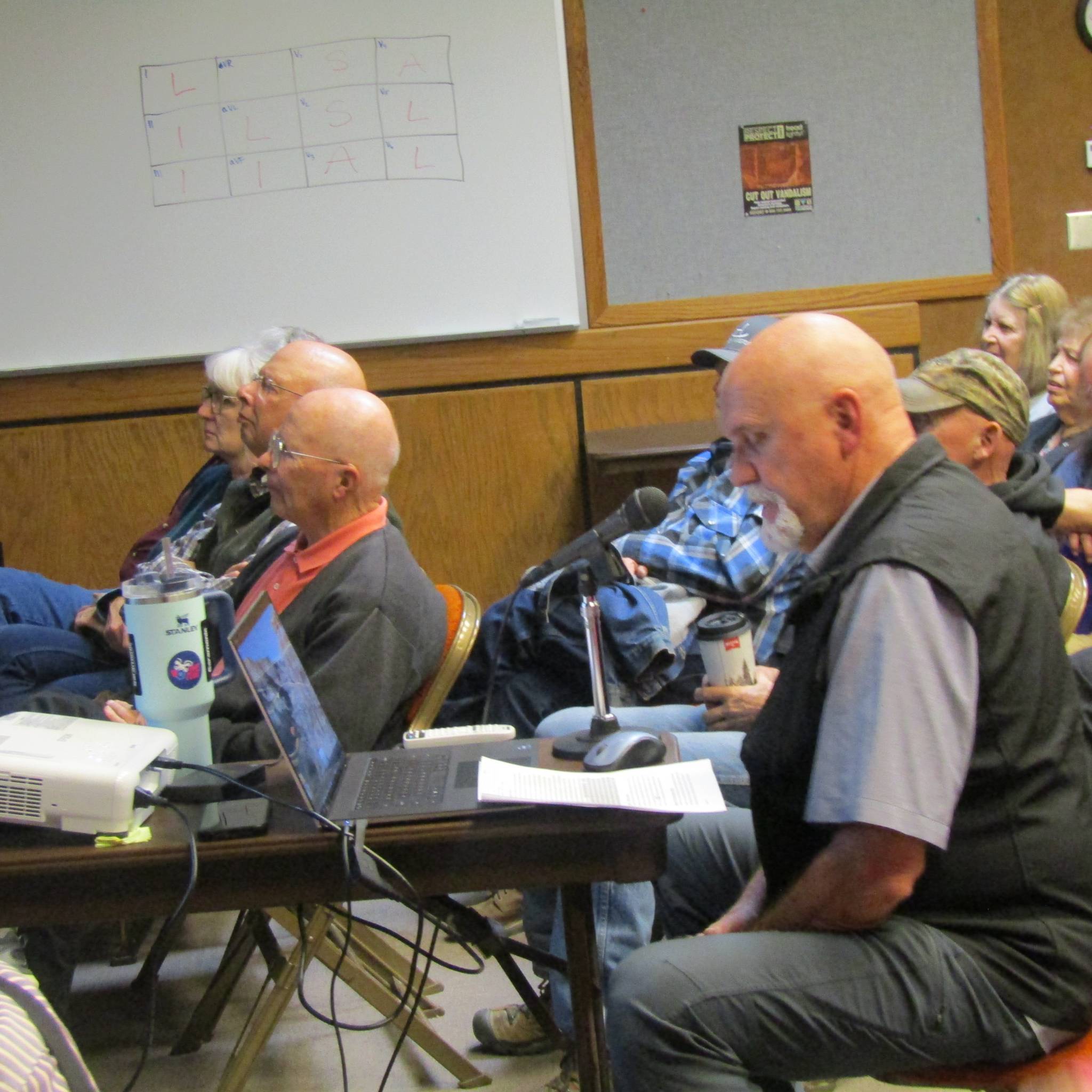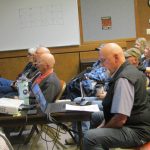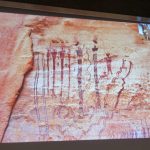By Julie Johansen
“Buckhorn Draw As You Have Never Seen It Before” gave Emery Historical Society members an aerial perspective of the Emery County landscape at their March monthly meeting. The pictorial and narrative presentation was given by Ben Grimes, who included Buckhorn Flat down the Draw to include the Swinging Bridge, a distance of about nine miles. His pictures showed the beautiful rock formations adorned with desert varnish and had also captured pictures of some of the wildlife of the Draw of today including big horn sheep, mule deer and bluebirds.
The Draw was on the edge of an ancient sea and dinosaurs roamed there, leaving several Allosaurus tracks in the sandstone. The Draw had also been a travel route for ancient men. The presence of wild horses and burros is evidence of those early Spanish travelers.
One of the main attractions in the Draw is the rock art from at least three cultures of indigenous tribes: Fremont, Pueblos, and Utes. The stories shared are modern man’s interpretation, but leave evidence of the earlier inhabitants of the area. Other attractions include the Morrison Knudsen Tunnels that are left from the cold war era. They were intended as shelters, though never used, as the sandstone did not withstand the blastings.
At the end of the Draw is a historical monument, The Swinging Bridge. It was built in the 1930 by the Civilian Conservations Camps (CCC) to aid in moving livestock across the San Rafael River. The dedication ceremony was in 1937 and, in 1996, it was selected to the historical register. Grimes called Buckhorn Draw “a real treasure in my backyard”.



